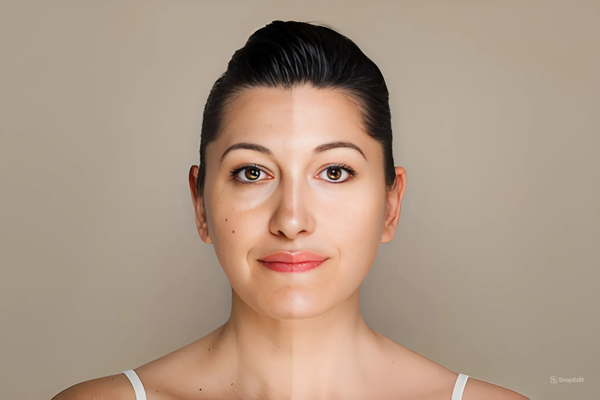Understanding Type 1 Diabetes: Causes, Symptoms, and Management
Learn about Type 1 diabetes, its causes, symptoms, and effective management strategies. Discover how insulin therapy, diet, and lifestyle changes help control blood sugar and prevent complications.

Type 1 diabetes is an autoimmune condition in which the body's immune system mistakenly attacks and destroys insulin-producing cells in the pancreas. Unlike Type 2 diabetes, which often has lifestyle-related causes, Type 1 diabetes is primarily genetic and immune-driven. It typically appears in childhood or adolescence but can develop at any age. Effective management of Type 1 diabetes involves careful monitoring and lifestyle adjustments, as well as a deep understanding of potential complications such as Diabetic Ketoacidosis (DKA).
What Causes Type 1 Diabetes?
Type 1 diabetes results from an autoimmune reaction where the immune system attacks pancreatic beta cells, the cells responsible for producing insulin. While the exact cause is unknown, research suggests that genetic predispositions and environmental factors, such as viral infections, may trigger this immune response. When insulin is lacking, glucose remains in the bloodstream rather than entering cells for energy, causing blood sugar levels to rise.
Symptoms of Type 1 Diabetes
Symptoms of Type 1 diabetes often develop suddenly and can include:
- Frequent urination: High blood sugar levels cause the kidneys to filter out excess glucose, leading to increased urination.
- Extreme thirst and dehydration: Frequent urination can cause dehydration, which leads to constant thirst.
- Unintentional weight loss: Without insulin, the body cannot use glucose for energy, so it breaks down fat and muscle instead.
- Fatigue and weakness: Lack of glucose in cells leads to low energy.
- Blurred vision: High blood sugar can lead to fluid shifts, impacting eye lenses and causing blurred vision.
- Frequent infections and slow-healing sores: Elevated blood sugar levels can weaken the immune system, slowing infections and healing.
Diabetic Ketoacidosis (DKA): A Critical Complication
A crucial aspect of Type 1 diabetes management is understanding Diabetic Ketoacidosis (DKA). DKA occurs when the body does not receive enough insulin, leading it to break down fat for fuel. This process produces ketones, acidic byproducts that accumulate in the bloodstream. When ketone levels become too high, the blood turns more acidic, which can be life-threatening if not treated.
Symptoms of DKA
Symptoms of Diabetic Ketoacidosis (DKA) include:
- High blood sugar levels and high ketone levels in the urine.
- Severe thirst and frequent urination.
- Nausea, vomiting, and stomach pain.
- Fruity-smelling breath from excess ketones.
- Rapid breathing, confusion, and fatigue.
Prevention and Treatment of DKA
Preventing DKA involves regular blood sugar and ketone monitoring, especially during illness, physical stress, or if blood glucose is persistently high. Immediate treatment is required if DKA is suspected, often involving hospitalization for intravenous fluids, insulin therapy, and electrolyte replacement to balance blood sugar and acidity levels.
Diagnosis of Type 1 Diabetes
Type 1 diabetes is diagnosed through blood tests that measure blood glucose levels:
- Fasting Blood Sugar Test: Measures blood sugar after an overnight fast.
- A1C Test: Reflects average blood sugar levels over the past two to three months.
- Random Blood Sugar Test: Measures blood sugar at any random time, which can be helpful if symptoms appear suddenly.
For Type 1 diabetes, a diagnosis is usually confirmed by testing for autoantibodies (indicators of immune activity against insulin-producing cells) and checking for the presence of ketones in the blood or urine, especially if DKA is suspected.
Managing Type 1 Diabetes
Management of Type 1 diabetes requires a lifelong commitment to monitoring blood sugar levels, balancing insulin therapy, diet, and exercise, and understanding potential complications. Effective management components include:
Insulin Therapy
People with Type 1 diabetes need to take insulin daily since their bodies cannot produce it. Insulin therapy options include:
- Injections: Short-acting, intermediate, and long-acting insulin to manage blood sugar levels.
- Insulin Pumps: Devices that provide a continuous supply of insulin, mimicking the body’s natural insulin release.
Advances in insulin delivery, such as artificial pancreas systems that automate insulin delivery based on continuous glucose monitoring (CGM) data, are improving quality of life and making management easier.
Diet and Nutrition
A balanced diet is essential, with close monitoring of carbohydrate intake, as carbs directly impact blood sugar. A diet rich in fiber, lean protein, and healthy fats helps stabilize blood sugar levels and prevents spikes. Avoiding excessive sugary foods and processed carbs is also recommended to reduce fluctuations in blood glucose.
Exercise and Physical Activity
Regular exercise helps increase insulin sensitivity and lower blood sugar levels. However, people with Type 1 diabetes need to carefully monitor their blood sugar during and after exercise to prevent hypoglycemia (low blood sugar). Preparing with snacks or adjusting insulin doses may be necessary before engaging in physical activity.
Blood Sugar and Ketone Monitoring
Frequent blood sugar checks using a glucometer or CGM are crucial. Monitoring ketone levels is also essential, especially if blood sugar levels are consistently high, as it helps in detecting and preventing DKA.
Potential Complications of Type 1 Diabetes
While careful management can help prevent complications, the risk is always present if blood sugar levels are poorly controlled. Common complications include:
- Cardiovascular Disease: High blood sugar can damage blood vessels, increasing the risk of heart disease and stroke.
- Nerve Damage (Neuropathy): Elevated glucose levels can damage nerves, particularly in the extremities, causing numbness or pain.
- Kidney Damage (Nephropathy): Diabetes can impair kidney function, potentially leading to kidney failure if untreated.
- Eye Damage (Retinopathy): High blood sugar damages the blood vessels in the eyes, which can lead to vision problems or blindness.
- Foot Problems: Reduced blood flow and nerve damage increase the risk of foot ulcers, infections, and potentially amputation.
- Skin Conditions: People with diabetes are more prone to bacterial and fungal infections, especially on the skin.
Emotional and Psychological Aspects of Type 1 Diabetes
Living with Type 1 diabetes requires daily attention to blood sugar management, which can be physically and emotionally challenging. Many individuals benefit from psychological support, such as counseling or support groups, to help manage the emotional aspects of living with a chronic condition.
Future Directions in Type 1 Diabetes Treatment
Research on Type 1 diabetes is focused on improving current treatments and finding a potential cure. Some promising areas of study include:
- Artificial Pancreas Technology: Automated insulin delivery systems are becoming more advanced, helping patients achieve better blood sugar control with less manual effort.
- Beta Cell Transplantation: Research is ongoing to develop methods for transplanting insulin-producing cells into patients with Type 1 diabetes.
- Immunotherapy: Treatments targeting the immune system may help prevent or delay the destruction of beta cells in people at high risk for Type 1 diabetes.
Conclusion
Type 1 diabetes is a complex, lifelong condition that requires diligent management. Understanding the symptoms, causes, and management strategies is essential to controlling blood sugar and preventing complications like DKA. With advances in treatment and technology, individuals with Type 1 diabetes can live healthy and fulfilling lives, but it requires daily commitment and support.
Sources
- Lucier J, Mathias PM. Type 1 Diabetes. [Updated 2024 Oct 5]. In: StatPearls [Internet]. Treasure Island (FL): StatPearls Publishing; 2024 Jan-. Available from: https://www.ncbi.nlm.nih.gov/books/NBK507713/
- Holt RIG, DeVries JH, Hess-Fischl A, Hirsch IB, Kirkman MS, Klupa T, Ludwig B, Nørgaard K, Pettus J, Renard E, Skyler JS, Snoek FJ, Weinstock RS, Peters AL. The Management of Type 1 Diabetes in Adults. A Consensus Report by the American Diabetes Association (ADA) and the European Association for the Study of Diabetes (EASD). Diabetes Care. 2021 Nov;44(11):2589-2625. doi: 10.2337/dci21-0043. Epub 2021 Sep 30. PMID: 34593612.
- Ehrmann D, Kulzer B, Roos T, Haak T, Al-Khatib M, Hermanns N. Risk factors and prevention strategies for diabetic ketoacidosis in people with established type 1 diabetes. Lancet Diabetes Endocrinol. 2020 May;8(5):436-446. doi: 10.1016/S2213-8587(20)30042-5. PMID: 32333879.





